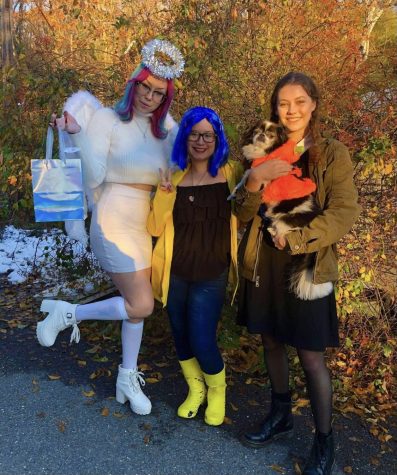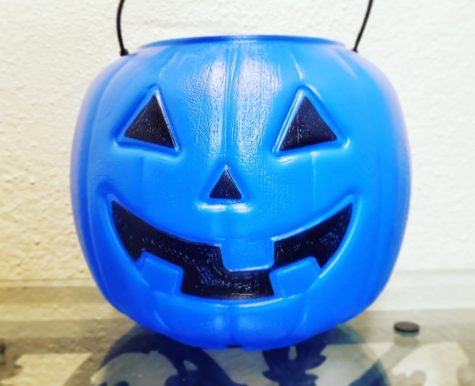Our tradition of ‘Trick or Treating’
Trick or treating is the most common and well known activity on Halloween. Kids get creative with costumes, parents buy candy to give out, and everyone has a good time. Almost every kid has experienced trick or treating. Free candy and you get to wear a fun costume, who wouldn’t love it?
According to Wiki, the first known practice of trick or treating originated in the early 1900’s, but didn’t become popular till around the 1930’s. First appearing all over in the United States in 1932, and becoming a more widespread idea in 1939, trick or treating has become a tradition for many families. Unlike many things from the past, trick or treating has stayed true to its origin. Kids dress up in fun costumes and their parents walk them around towns to collect candy from friendly neighbors.
Fun fact!
Trick or Treating may have originated back in medieval times during a practice called “Souling” where poorer families would dress up as souls and go door to door exchanging food for prayers.

Ariana Goulkin, her older Sister Lexi, and Olivia Tabor dressing up for Halloween. Goulkin’s dog King also has the Halloween spirit.
According to Time Magazine, most kids stop dressing up and trick or treating between 12 and 16 years old. Personally, I know I stopped trick or treating around 12 years old. Though I am now 17, I know some of my closest friends still enjoy it.
“I’m a big fan of trick or treating,” says senior Ariana Goulkin, “I find it weird that people try to put an age limit on it.” she expresses. “I think people should be allowed to have fun at any age and I love seeing how excited everyone gets about what they’re dressing up as, who they’re going with, ect!”
Goulkin is one out of the handful of teenagers who still trick or treat. She doesn’t care if it seems “childish” to some; she puts those opinions aside and expresses herself each Halloween. This year, Ariana is doing a group costume about the four seasons with her friends. Emily Murphy, another senior from Oakmont, agrees with Goulkin.
“I think trick or treating is a great way to express yourself,” says Murphy, “Be who you want without any judgment for a day. Too bad it can’t be like that everyday.”
Sometimes, teenagers who enjoy trick or treating have to keep it secret because of judgmental friends or peers. Though most teenagers could care less about what their peers do, some remain judgmental and may cause the person insecurities. It becomes hard for the teens to express themselves and have fun, and many feel pressured to stop trick or treating before they actually want to stop.
Some parents also have the perspective that high school students are “too old” to be dressing up and going out on Halloween night. Though most parents just want kids to have a childhood, others ruin or prevent it for theirs. A fellow senior offered to tell us about her situation.
“My parents never allowed us to trick or treat or celebrate Halloween,” she stated, “Because of their religion, growing up I always felt left out of things.”
“I think it’s important to do things your own way as you start to get older and finding yourself,” She continued, “Hopefully, I’ll be able to participate in it this year, it’s something I’m working on doing for myself.”
Fun Fact!
Have you ever seen blue pumpkins for trick or treating? That’s because they represent kids with autism so other parents are aware of it!

Though trick or treating is often viewed as a fun and harmless celebration, there are some dangers associated with the spooky activity.
I bet after you were done collecting candy after Halloween night, your parents would go through it first before letting you eat any. Some kids knew why they did this, some didn’t. If you’re still unsure what I’m talking about, let me tell you. Sometimes, people with ill intentions giving away candy will lace the candy with chemicals or sharp objects such as razors. Parents often tell you they’re looking for razors, but they’re also looking for any holes in the candy. Why? A small hole on a piece of candy can mean a needle pierced the rapper and a substance could have been injected within the candy. According to CDC news, no deaths have been reported regarding spiked Halloween candy, but it’s still recommended to check.
Fun fact!
Think you know the most hated Halloween candy? Take a guess! If you guessed circus peanuts, you’re right! Though candy corn is a close second, circus peanuts are said to be one of the most hated candies in America!
Trick or treating has been around for years, and was a memorable part of many kids’ childhood. Weeks in advance, we’d plan our costumes and make our parents take us to buy them. We would take forever getting ready because the excitement was too much. We’d meet up with our best friends and collect sweet candies together, and when we were done we would trade them like they were Pokemon cards. For a lot of us, our parents would have to hide our candy somewhere so we didn’t eat it all in one sitting, and we’d groan when told we have to wait till after dinner to pick a few pieces out. I know I speak for a lot of people when I say that Halloween night was one of my favorite nights of the year and just how important it was for making fun childhood memories.

Ally Lewis is Class of 2022 at Oakmont Regional High School. This is her first year with the Oakmonitor. In her free time, she enjoys watching streamers,...


